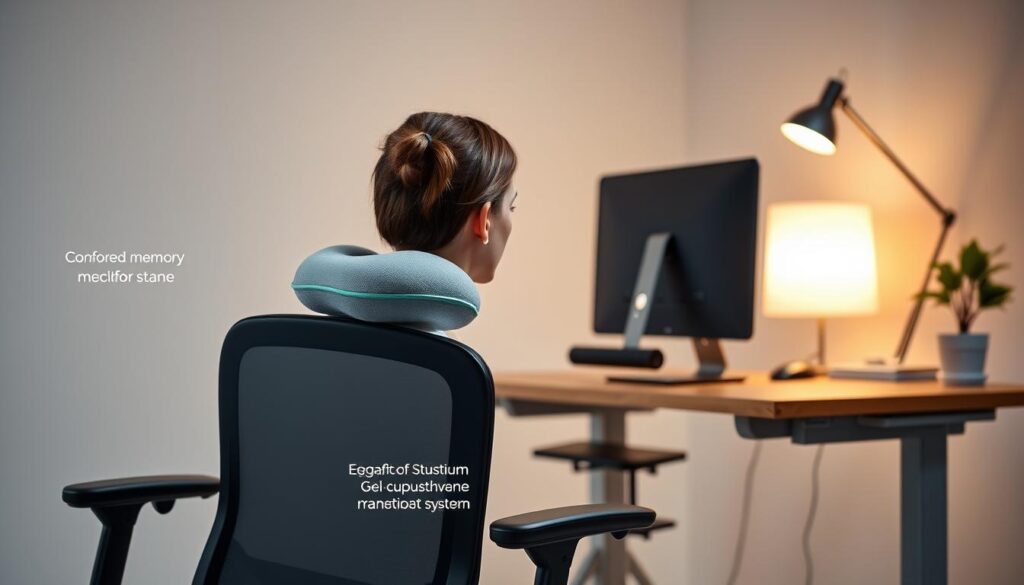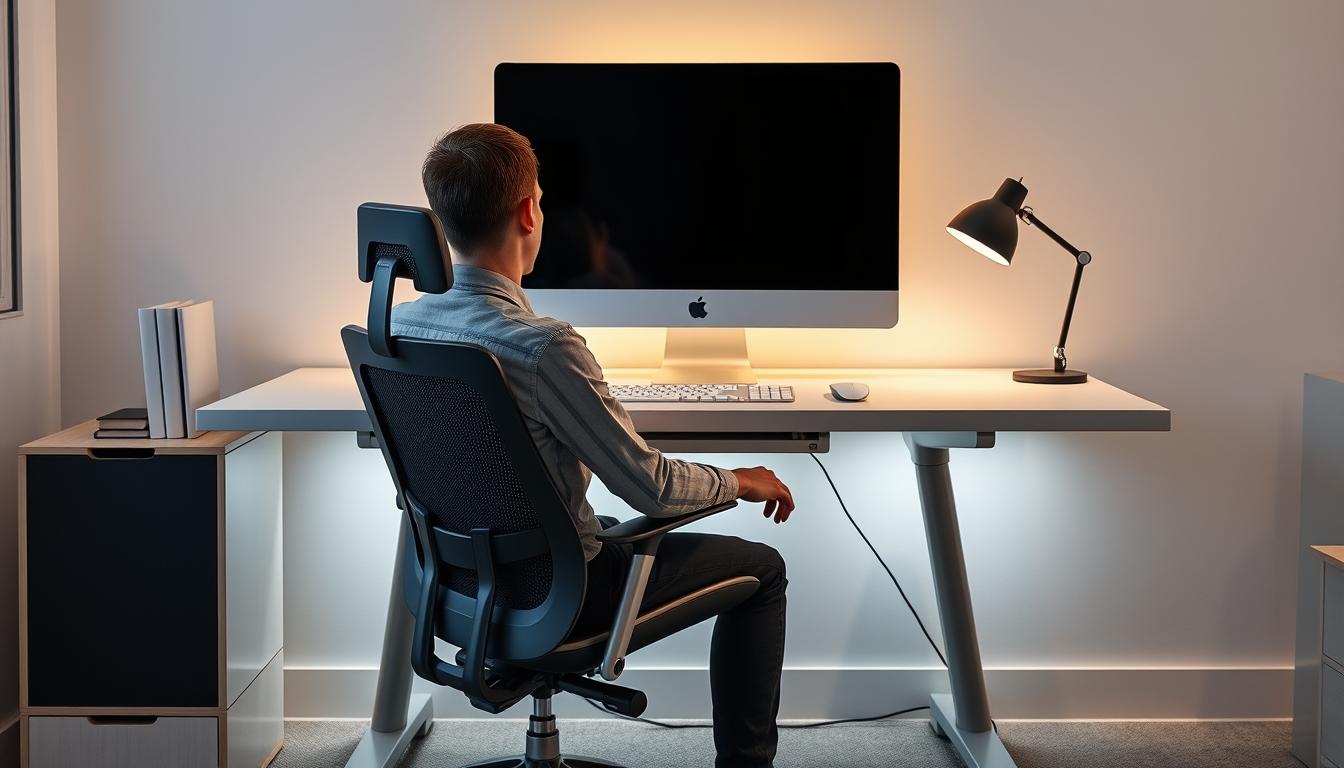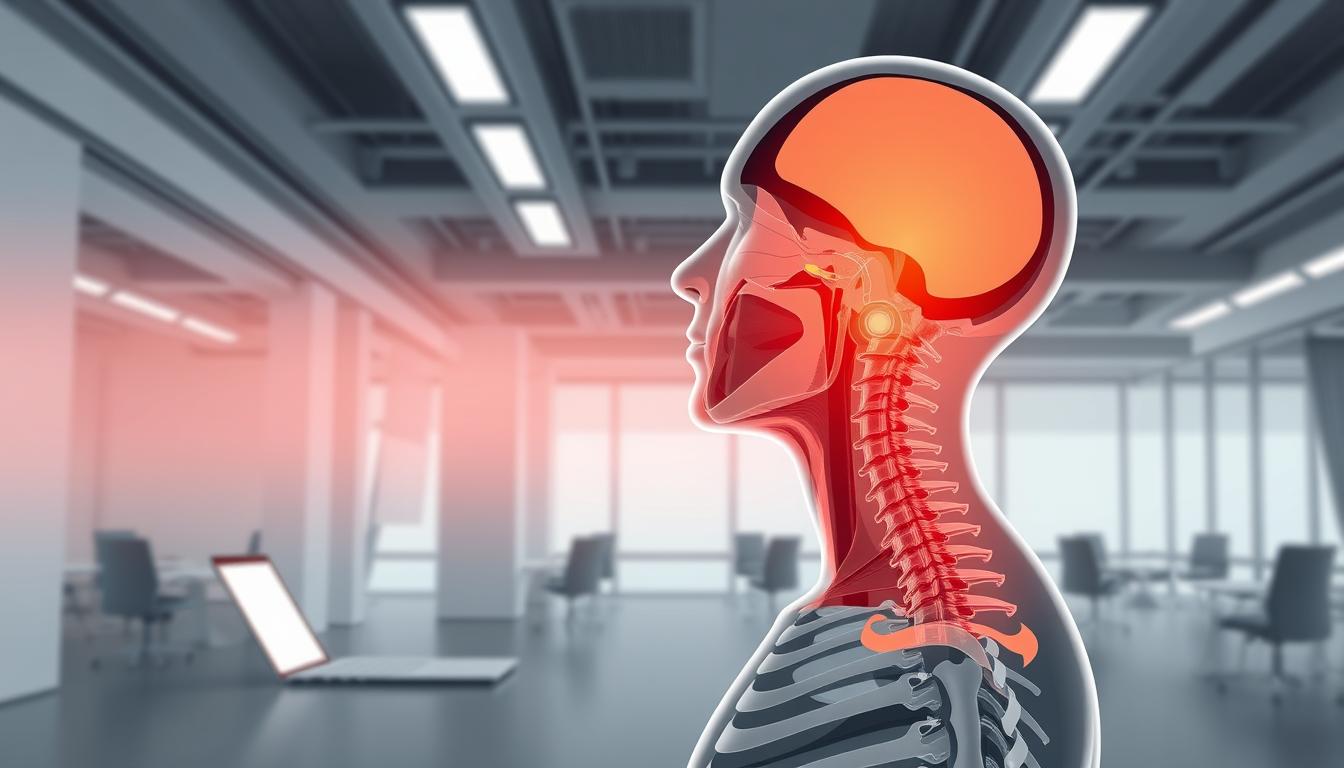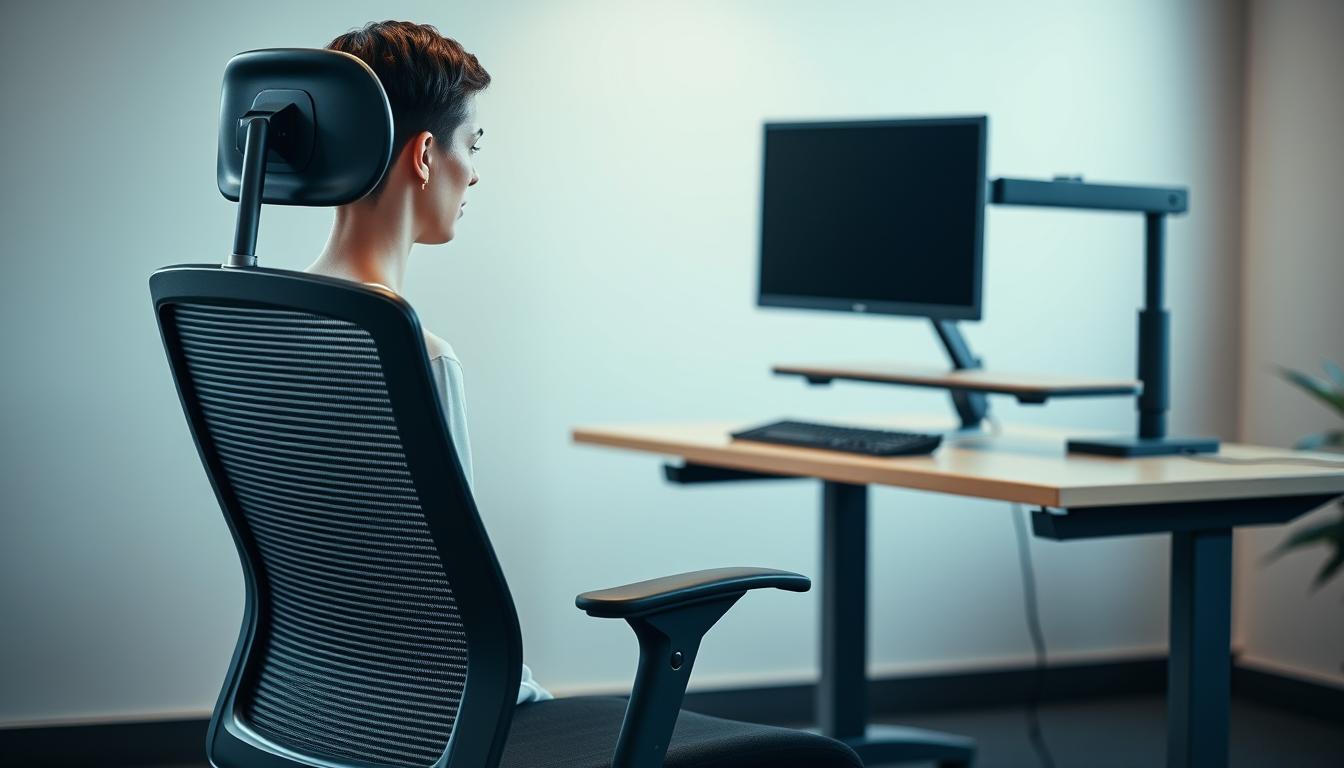In today’s world, where work happens fast, ergonomic tools are key to stop neck and shoulder pain. It doesn’t matter if you’re in a regular office or working from home, using the right furniture is super important. Lots of people get sore because they sit wrong or their workspaces aren’t set up right, hurting their work and happiness.
We’re going to look at different ergonomic ways to make working less painful, boost wellness, and help we develop better work habits. Picking a good chair and setting up your desk the right way are big steps. Knowing about these can really make your day more comfortable.
Understanding the Importance of Ergonomics
Office ergonomics is key in making workspaces that are both healthy and efficient. Tools and furniture designed well can lower the chance of musculoskeletal problems. These problems often come from bad workstation setups. By focusing on ergonomics, people can make work places that boost posture, ease strain, and raise work quality.
Studies show that good ergonomic setups mean fewer work injuries and less healthcare costs. When workspaces fit ergonomic needs, employees feel happier and more comfortable. Knowing about office ergonomics helps everyone’s well-being and makes the workplace better.
Common Causes of Neck and Shoulder Pain
Learning about neck pain causes and shoulder pain causes helps people make smart choices. Poor posture is a big reason for pain. Many sit wrongly at desks for too long, hurting their neck and shoulders.
“Tech neck” is a problem from using gadgets too much. Staring down at phones or laptops for long times causes it. This behavior worsens neck issues over time.
Repetitive strain injury also affects many. It comes from doing the same action over and over, like typing or mouse clicking. To fix this, change your work setting and take breaks to move around.
Ergonomic Furniture: The Foundation of Comfort
Creating a comfy work area starts with picking the right ergonomic furniture. An ergonomic chair is key to supporting your back and making sure you sit right. It offers important features, like being able to change its height and giving lumbar support.
This makes your sitting position better for staying comfortable through long work hours.
Choosing the Right Office Chair
Look for office chairs that give great lumbar support and can be adjusted. A good ergonomic chair makes it easier to keep your knees and hips comfy. This cuts down on neck and shoulder pain.
Opt for chairs made with materials that let your skin breathe and offer good cushioning. This supports you without messing with your movement.
Investing in a Standing Desk
A standing desk changes up your workspace, letting you switch between sitting and standing. It promotes healthier work habits and lessens the ache from staying in one spot too long. Studies have shown standing desks really help.
They can lower the pain in your neck and back. This boosts your overall health.
Ergonomic Tools to Prevent Neck and Shoulder Pain
Choosing the right ergonomic tools is crucial for those who sit at a computer for long. Ergonomic keyboards and mice are key in keeping pain away. A good keyboard keeps wrists straight, making typing more comfy.
On the other hand, an ergonomic mouse lessens wrist and forearm stress. This makes long periods of computer use easier.
Ergonomic tools help avoid injuries from doing the same action over and over. They’re made to ensure a comfy grip and right hand position. For example, ergonomic keyboards often come in split designs. This shape helps keep wrists at a natural angle, avoiding discomfort.
Buying this equipment can make you work better and reduce neck and shoulder pain risks.
The Role of Proper Desk Setup
Creating an ergonomic workspace means thinking carefully about how you set up your desk. This includes where you place your monitor and how you adjust your keyboard. A well-set-up desk prevents discomfort. It makes sure that daily tasks don’t cause you harm or pain.
Optimal Monitor Placement
Putting your monitor in the right spot is very important. The top of your monitor should be at or just below eye level. This keeps your neck in a good position and avoids strain.
You should also keep the monitor about an arm’s length away. This makes it easy to see without having to lean forward or look at it from a weird angle.
Adjusting Your Keyboard and Mouse
It’s also key to adjust your keyboard correctly. This helps keep your shoulders relaxed and your wrists straight when you type. Your keyboard should be set so your elbows are close to your body at a right angle.
Using padded wrist rests can help keep your hands in a natural position. This lowers the chance of getting hurt from doing the same movements over and over. Your mouse should be right next to your keyboard. This lets you reach it easily without stretching, making your workspace better for staying productive for longer.
Utilizing Supportive Accessories
Creating a comfy workspace is more than just picking the right desk and chair. Adding supportive accessories greatly improves ergonomic support. This leads to better posture and less pain during long work hours. Items like wrist pads and monitor arms help keep your body properly aligned.
Wrist Pads and Support Cushions
For those who type or use a mouse a lot, wrist pads are a must. They cushion your wrists, keeping them in the right position and reducing strain. This helps keep your wrists and forearms relaxed, making you more comfortable. Support cushions also help, ensuring your back is supported all day.
Monitor Arms and Stands
Monitor arms and stands let you adjust your screen perfectly. Setting your monitor at the right height and distance keeps your neck and eyes happy. It cuts down on the pain from bad screen placement. A good monitor arm can make your desk setup better and more flexible for different tasks.

Incorporating Movement into Your Day
Moving around during your day is key for keeping your body healthy. This is especially true for those who sit a lot for work. Being active boosts your energy and eases tension in areas like your neck and shoulders. Making time for quick movement breaks is an easy fix to feeling better and fighting the downsides of sitting too much.
You can easily add little exercises to your workday. Try doing shoulder rolls, stretching your neck, or standing during phone calls. These gentle movements help keep your blood flowing and your muscles relaxed. Studies show that moving a little throughout the day can keep you from getting tired and sore from sitting too long.
- Set a timer for movement breaks every 30-60 minutes.
- Perform desk exercises that target the neck and shoulders.
- Stand or walk during phone calls or video meetings.
Taking Regular Breaks to Alleviate Strain
Taking breaks regularly can really help with neck and shoulder strain. By learning how to take breaks the right way, you feel better and work better too. These breaks allow your body to heal from sitting or standing too much.
Stretching Exercises for Neck and Shoulders
Doing specific stretches helps ease tension in your neck and shoulders. Here are some movements to try:
- Neck tilts: Gently tilt your head towards each shoulder while holding for 15-30 seconds.
- Shoulder rolls: Lift your shoulders up towards your ears and roll them back and down.
- Chest opener: Stand tall and clasp your hands behind your back while pulling your shoulders back.
You can do these stretches at your desk to get quick relief.
The Importance of Frequent Position Changes
Changing your position often during the day helps avoid pain from staying in one place too long. Make sure to stand up, walk around, or change how you’re sitting every hour. These changes improve blood flow and lower the chance of muscle pain.
Taking breaks and stretching not only makes you more comfortable but also helps you focus better. This can make you work more efficiently.
Conclusion
Using ergonomic solutions is essential, not just a fad. It helps people feel better at work and do their jobs better. To keep your neck and shoulders healthy, it’s smart to get good quality ergonomic furniture. Also, setting up your desk properly and using helpful accessories is key.
Checking your workspace regularly is also very important. You want to make sure everything you use helps you work well and stay healthy. Little changes, like where your monitor is or using wrist pads, can really help. They keep you from hurting and having pain all the time. Making these changes can help everyone have a better, healthier place to work.
In the end, focusing on ergonomics does more than just protect your neck and shoulders. It makes people happier with their jobs. We all should have a work area that helps us feel good and do our best. So, let’s start using these ergonomic solutions today.



